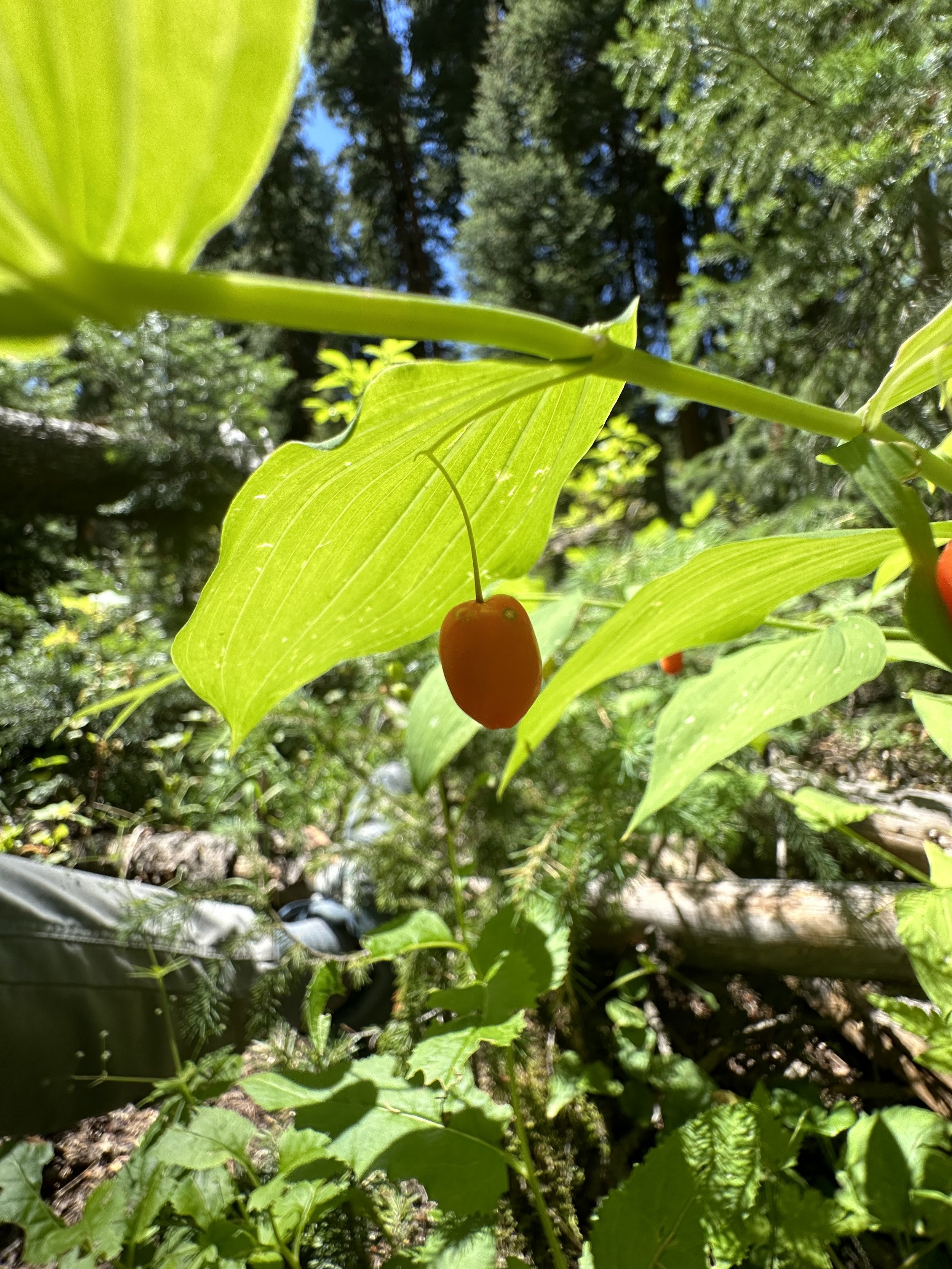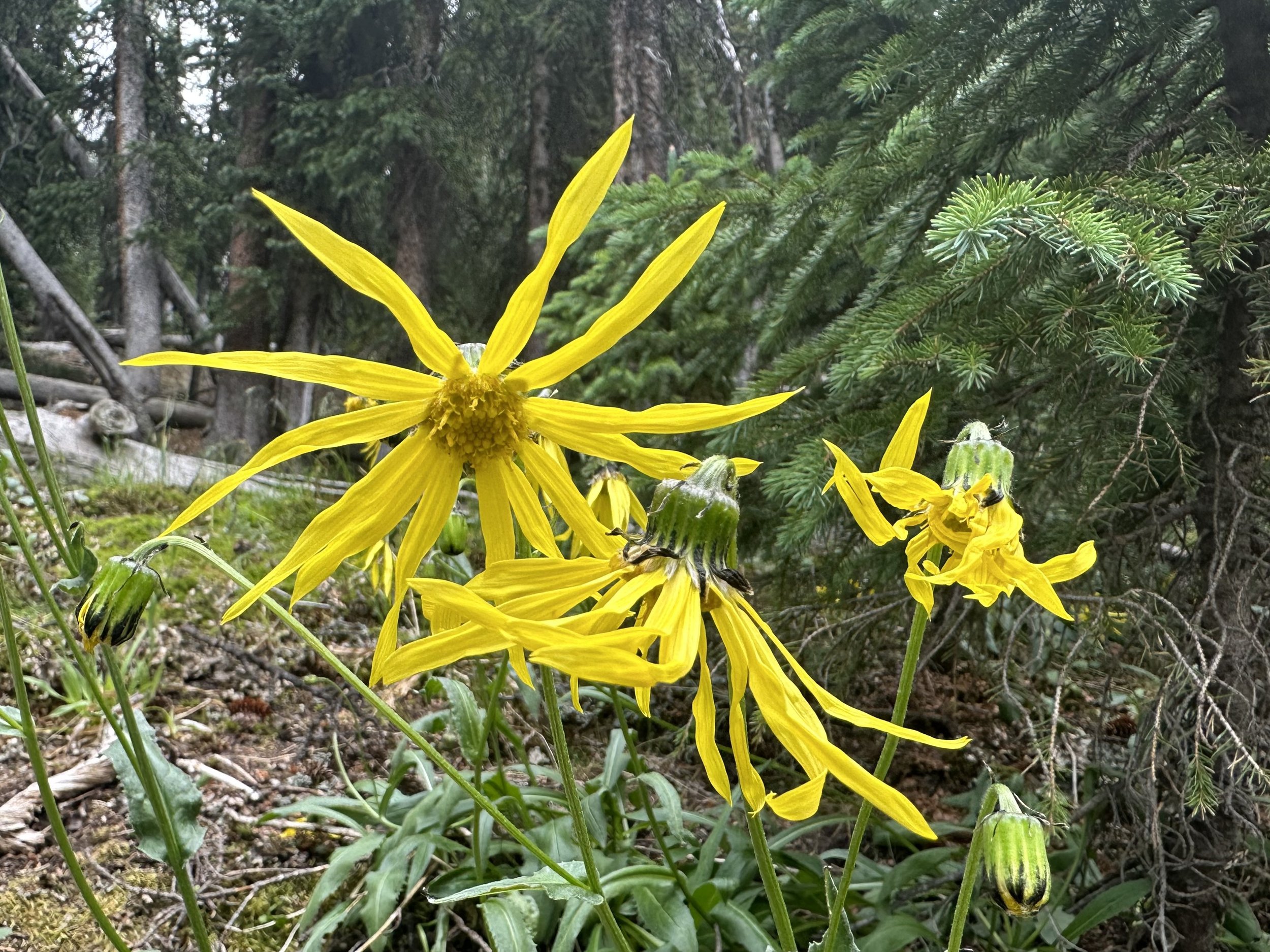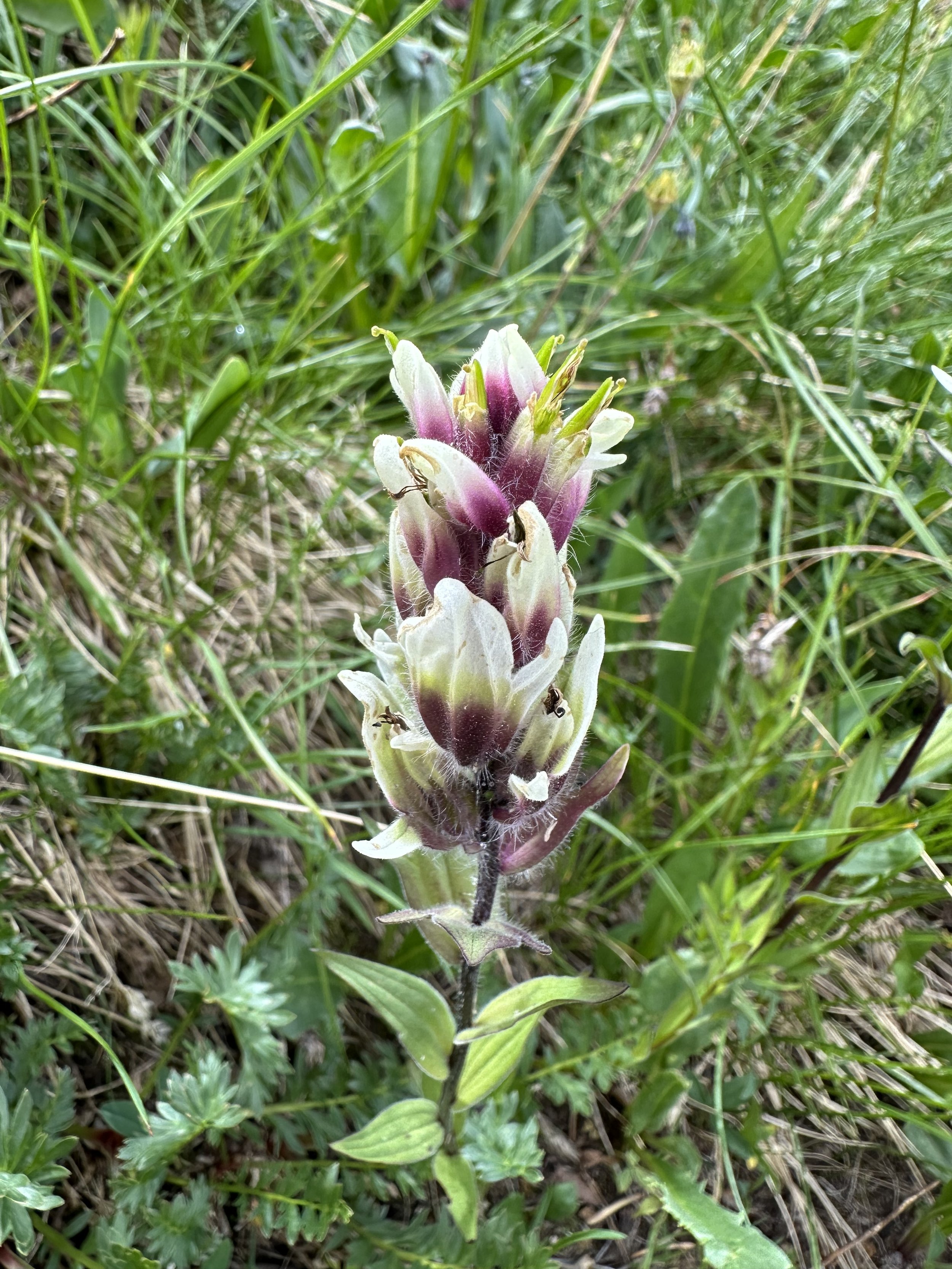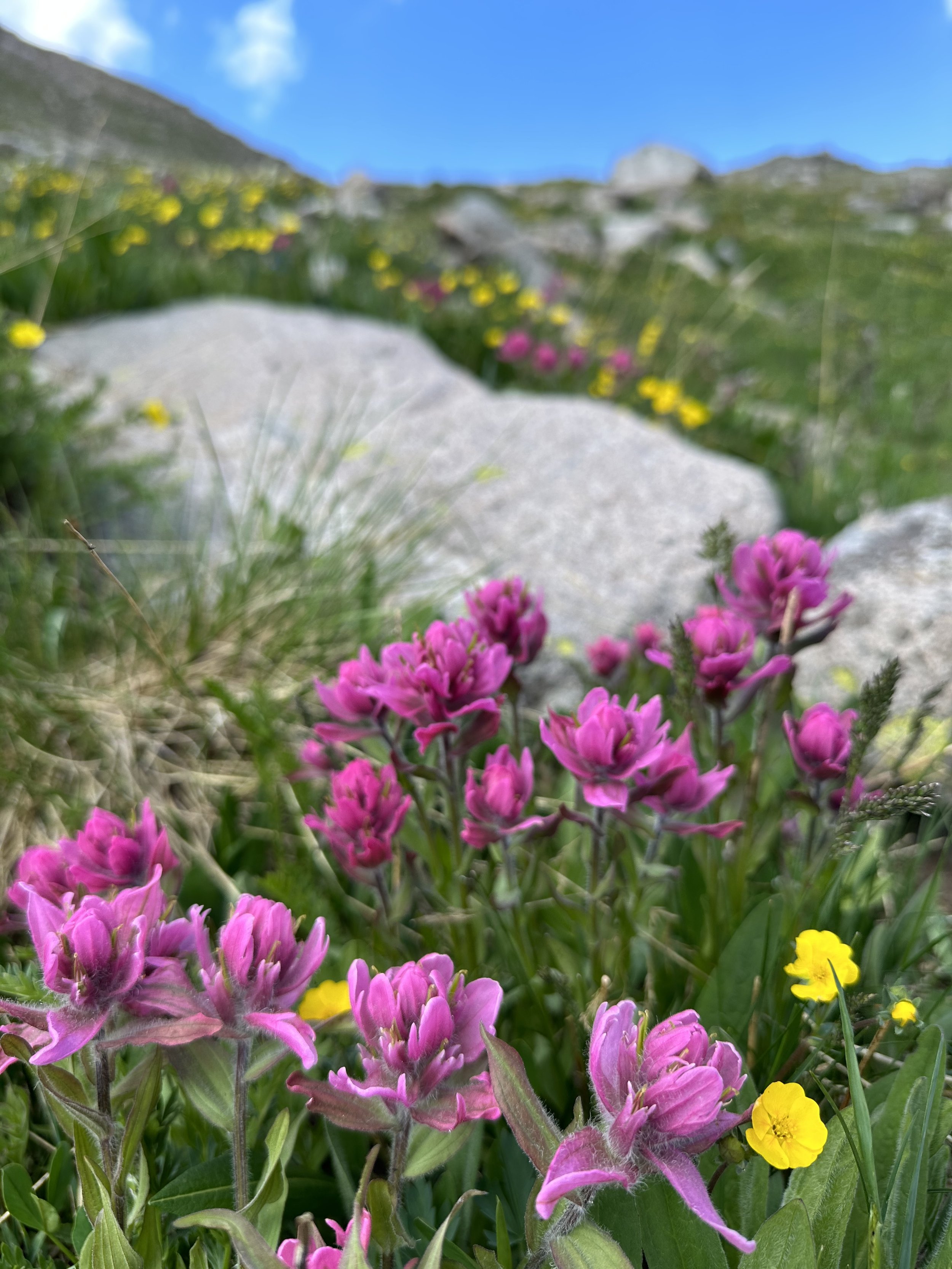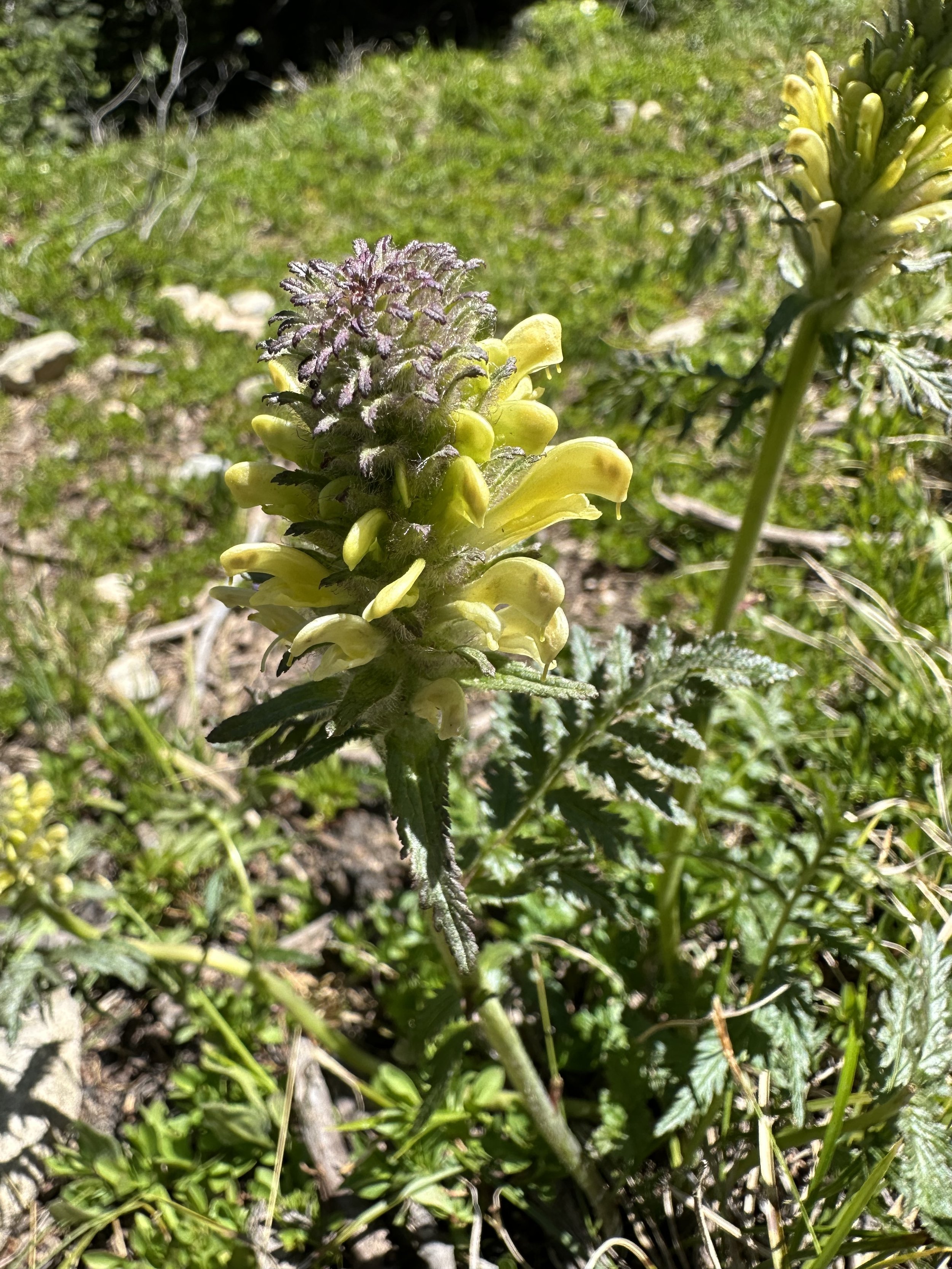Streptopus amplixifolius, July 9, 2023
In fruit, Weller Lake, 9,800’, August 15, 2023
Common & scientific name
Twisted stalk, Streptopus amplexifolius
Family
Lily, Liliaceae
Location
Grottos, 9,500’
Fun, weird, helpful, or little known fact
This is a rare find on the Pass that I was delighted to see in the popular Grottos day use area. From the US Forest Service’s wonderful “Plant of the Week” blog:
“To the public, scientific names of plants can sound silly, old-fashioned, or even a bit pretentious. Sometimes, however, the Latin name can be quite descriptive and even a bit mellifluous. One of my favorites to pronounce is Streptopus amplexifolius, also known by its less melodious common name of twisted stalk. Technically derived from Greek, “streptos” is twisted and “pous” is footed, referring to the diagnostic 90-degree twist in the flower stalk after it emerges from the base of the upper leaves. To complete the etymology, “amplexi” means clasping and “folius” is leaf in reference to the upper leaves that snuggly embrace the stem.”
When its red-orange berries come out, hanging from its kinked (a better descriptor than “twisted”) stalks (see photos left & below), it is even more glorious!
August 15



